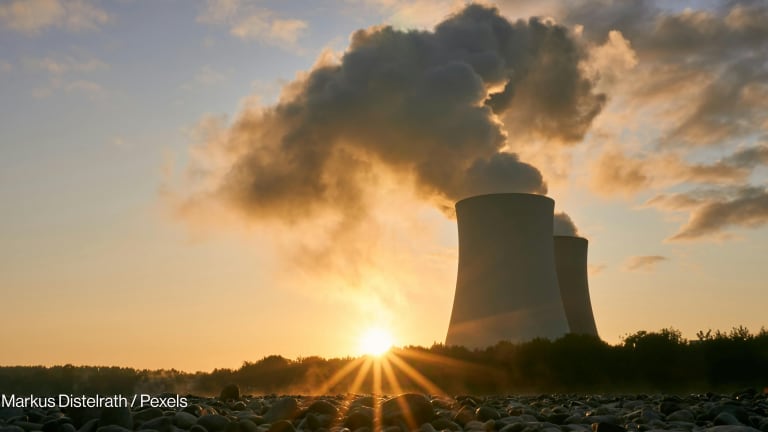
WASHINGTON — “Capital” looks to be the watchword of the 2017 World Bank and International Monetary Fund annual meetings: Who has it? Who’s going to get more of it? And how can it be better deployed to achieve maximum development impact around the world?
These are the first annual meetings of World Bank President Jim Yong Kim’s second term in office, and they provide a venue for Kim to make the case for why the multilateral development institution still occupies a central place in a changing world — and why it should get more funding. That pitch, difficult at the best of times, has proven a hard sell to a U.S. president and administration wary of investing in multilateral cooperation.
Kim has argued the World Bank offers its shareholders good value for money, and he is pitching the institution as no mere lender, but a financial wizard capable of turning billions into trillions. The International Finance Corporation — the bank’s private sector arm — plays a critical role in that vision, and World Bank-IFC cooperation around a new “cascade” lending and investment framework will be on full display this week in Washington.
Finally, Kim is looking to direct the world’s attention to the state of human capital — and the critical role investments in health and education play in preparing the world’s future workforce for an economy transformed by automation and demanding higher skilled employees.
Devex is reporting from the World Bank’s headquarters this week, with a daily newsletter offering an inside look at a global development behemoth in the spotlight. Here are five big topics we’ll be watching.
1. Kim’s art of the deal
World Bank President Jim Kim’s quest for a capital increase at the World Bank got a lot more complicated with the election of U.S. President Donald Trump last year, touting a policy of “America First” nationalism.
Kim wants the bank’s shareholders to agree to give the institution more money so it can sustain or increase its lending to borrower countries around the world. Those negotiations seemed to be on track — until Trump’s surprise victory upended U.S. support for the plan. Now, Kim faces the tricky task of showing the U.S. government it stands alone in its resistance to moving ahead with the capital increase — without antagonizing a Trump administration with the power to make Kim’s second term a challenging one.
“We are moving in a direction and the vast majority of countries now, we think, are onboard, and it's just a question of when the capital increase will actually happen,” Kim told reporters in a press call last week. “Now it's just a question of timing. And so we hope that there will be a discussion during these annual meetings, and that there will be a deadline as to when the final decision would be made.”
Kim has run into a skeptical U.S. Treasury Department, said Scott Morris, senior fellow at the Center for Global Development and a former deputy assistant secretary at Treasury. Some U.S. officials object to the World Bank’s lending to large economies such as China, Morris said, and they believe that instead of getting more capital, the bank should do less lending to America’s economic competitors. Kim’s task will likely be to strike a bargain that relates to the bank’s large country borrowers in exchange for a shareholder agreement to hand over more money, Morris said.
“They’re not going to get a firm ‘yes’ — or even a soft ‘yes’ — from the United States at this stage. They’re hoping to avoid anything that looks like a firm ‘no,’” Morris said.
He added that Kim’s aim will be to extract some kind of statement from the U.S. representatives to the bank that creates a timeline for deciding about the capital increase in time for the 2018 spring meetings in April.
One prominent World Bank staff member told Devex that the question of the capital increase is the one thing on bank employees’ minds during these annual meetings, because a ‘yes’ or ‘no’ from the bank’s shareholders “will determine whether we're in expansion mode or hunkering down.”
2. Is Kim’s alliance with Ivanka enough to tip the scales?
Creating the Women Entrepreneurs Finance Initiative, or We-Fi, at the suggestion of the Trump’s daughter and Senior Advisor Ivanka Trump, was potentially a neat bit of diplomacy on Kim’s part as a means of finding common ground between the White House and the World Bank — although some have criticized the move.
Launched officially in July, We-Fi aims to raise $325 million in grant funding and then mobilize more than $1 billion in international financial institution and commercial financing. It caused a stir among the development community when it was first raised, with some raising concerns about the credibility of the facility and that an alliance with Trump’s daughter could damage the bank’s reputation. Others heralded it as an astute move by Kim to find common ground with his institution’s largest shareholder.
The new facility will be featured during an event on Saturday, and it is rumoured Ivanka Trump may even attend. But it remains to be seen whether the collaboration between the White House and the World Bank on We-Fi can translate into anything more concrete — such as a capital increase — than a meeting of minds around women’s economic empowerment.
3. China’s multilateral moment?
The World Bank’s relationship with the United States has grown more complicated at the same time that China is expanding its engagement with developing countries. A collision of those two trends could see the Asian powerhouse exerting greater influence over a multilateral development financier that America has historically shaped.
The World Bank chief has already shown he wants the institution to play a large role in China’s One Belt One Road initiative, committing billions of dollars to infrastructure investments in support of a more integrated “silk road” network across Asia.
One Belt One Road — and the degree to which the initiative’s priorities find common cause with World Bank investment plans — will be a topic of discussion in both the official annual meetings and in side events. Kim will join Jin Liqun, president of the Asian Infrastructure Investment Bank, and China’s vice minister of finance on stage at the World Bank Thursday.
4. Tackling the human capital crisis
Kim is planning to shine a spotlight on human capital investments during these annual meetings. He wants the bank to help borrower countries find private sector dollars to fund projects that are commercially viable, so those countries can use relatively scarce public funds for critical investments in health and education.
“We are facing several human capital crises globally,” Kim told reporters, citing the 155 million children who are stunted and 100 million people who are driven to poverty by high health expenses. Those circumstances, combined with the downward pressure automation is expected to exert on low-skill jobs, raise the stakes for countries to invest in their own human capital.
The bank is going to take a “naming and shaming” — and also, a naming and congratulating — approach. Lask week Kim revealed his plans for a “Human Capital Project,” which will draw on the institution’s vast troves of data to create a country-by-country human capital index, and then point to policy and investment decisions countries can take to improve their standing.
“Some countries will be surprised,” Kim said last week. “Some countries will be very unhappy with the fact that they’re lower than other countries, and we're not going to just stop at the stock of human capital. We're also going to look at the things you can do to improve your human capital very quickly.”
The initiative sounds reminiscent of the World Bank’s highly touted “Doing Business” report, which ranks countries according to the conditions companies encounter when they try to operate there. The aim of that index is to compel countries to pursue policies and investments that make them more attractive to business owners.
Kim hopes a similar methodology can push national leaders to assign greater value to the health and education of their citizens.
“What we want to do by doing this ranking of capital stock is create overwhelming demand from more effective interventions in health, education, and social protection,” Kim said.
5. The IFC has its own agenda
As Devex Editor-in-Chief Raj Kumar wrote today, the World Bank is busy reinventing itself as much more than a lender. It wants to be seen as a financial wizard and engineer for good that’s able to unlock vast amounts of previously untapped private capital for public ends.
The International Finance Corporation is set to play a crucial role in this new identity and has been undergoing its own makeover under the leadership of popular World Bank veteran Philippe Le Houérou, who is on a mission to bring development impact back to the heart of the previously more profit-focused IFC.
Opinion: Here's how the International Finance Corporation is working with financial institutions
On the first day of the World Bank Annual Meetings, International Finance Corporation CEO Philippe Le Houérou gives an update on how his organization is working with financial institutions.
Part of this means cleaning up the organization’s chequered track record when it comes to social and environmental safeguards, specifically when it comes to its lending through financial intermediaries, which has attracted criticism from civil society groups in the past. In a piece published exclusively on Devex today, Le Houérou reports on progress toward making these investments more “selective” in order to help create a more “responsible banking system.”
The IFC, along with the arms of the World Bank, is also fundamentally changing the way it does business through the new “cascade” principles. As defined in a World Bank vision document published in April, “cascade” refers to a new approach that entails collaboration between the different segments of the World Bank and the IMF to identify the best possible recipe of support for each project, and wherever possible to make way for private sector financing. In practice, this means going deeper into fragile countries, and potentially passing up lucrative projects if they are commercial finance-ready, as Le Houérou explained to Devex in May.
This kind of work costs money, meaning the IFC is seeking its own capital increase; this is likely to be an even harder sell than the World Bank’s IBRD increase request, experts say. The annual meetings could present a good opportunity to make a case to the Trump administration. So participants should expect to hear a lot about how the IFC is “cascading” finance into places the private sector is reluctant to go — especially the Middle East and Africa — both regions of interest to the Trump administration.
Devex reporters Michael Igoe and Sophie Edwards will be on the ground at the World Bank annual meetings. Sign up for our daily morning briefings and follow us on Facebook and Twitter for everything you need to know from the annual meetings.
Read more Devex coverage of the World Bank
► Smart Money: The World Bank looks to a future of creative financing
► World Bank CEO Kristalina Georgieva lays out her vision for an agile bank
► Interactive: What can we tell from the World Bank pipeline data?
Sign up for our daily morning briefings and follow us on Facebook and Twitter for everything you need to know from the annual meetings.









